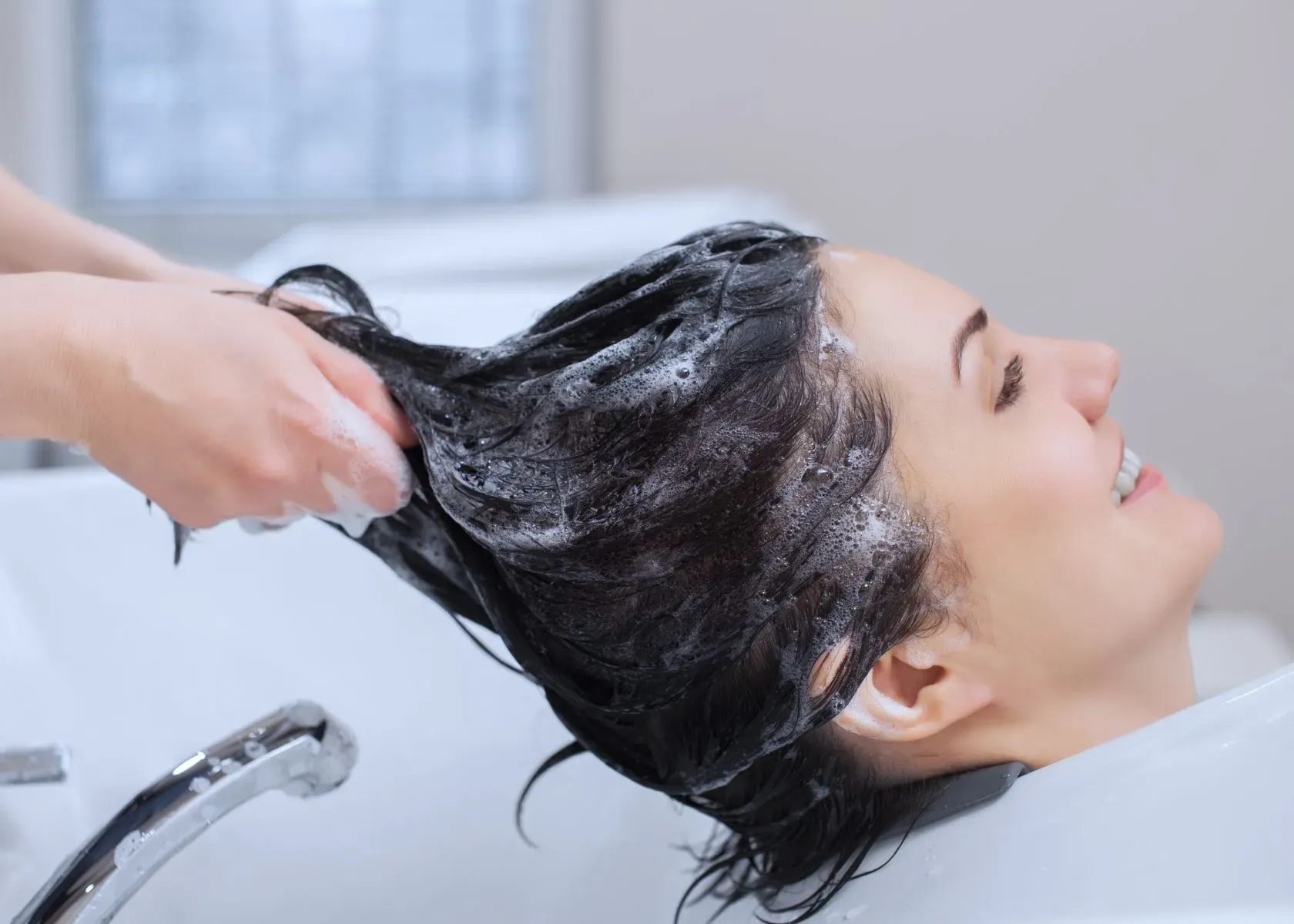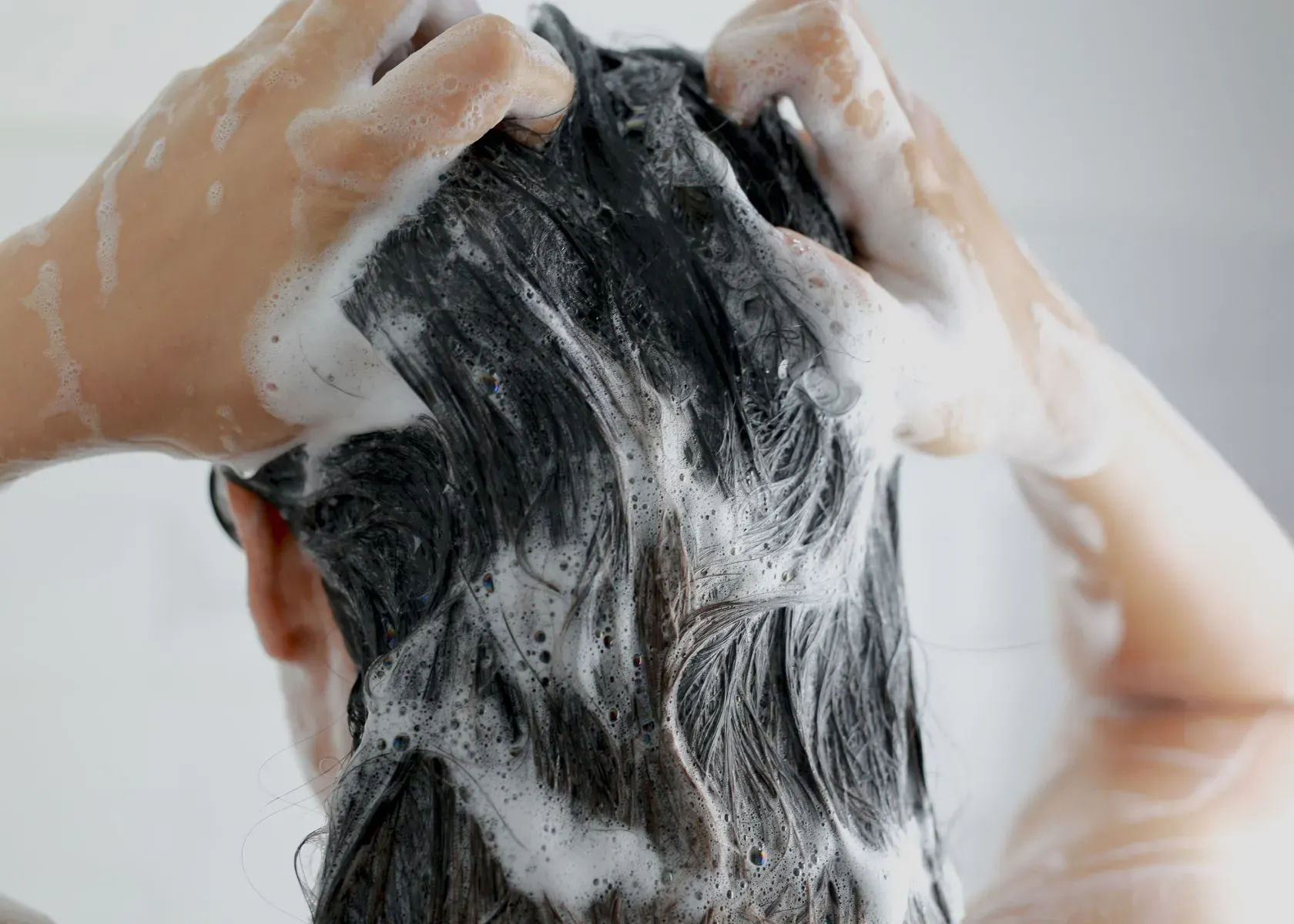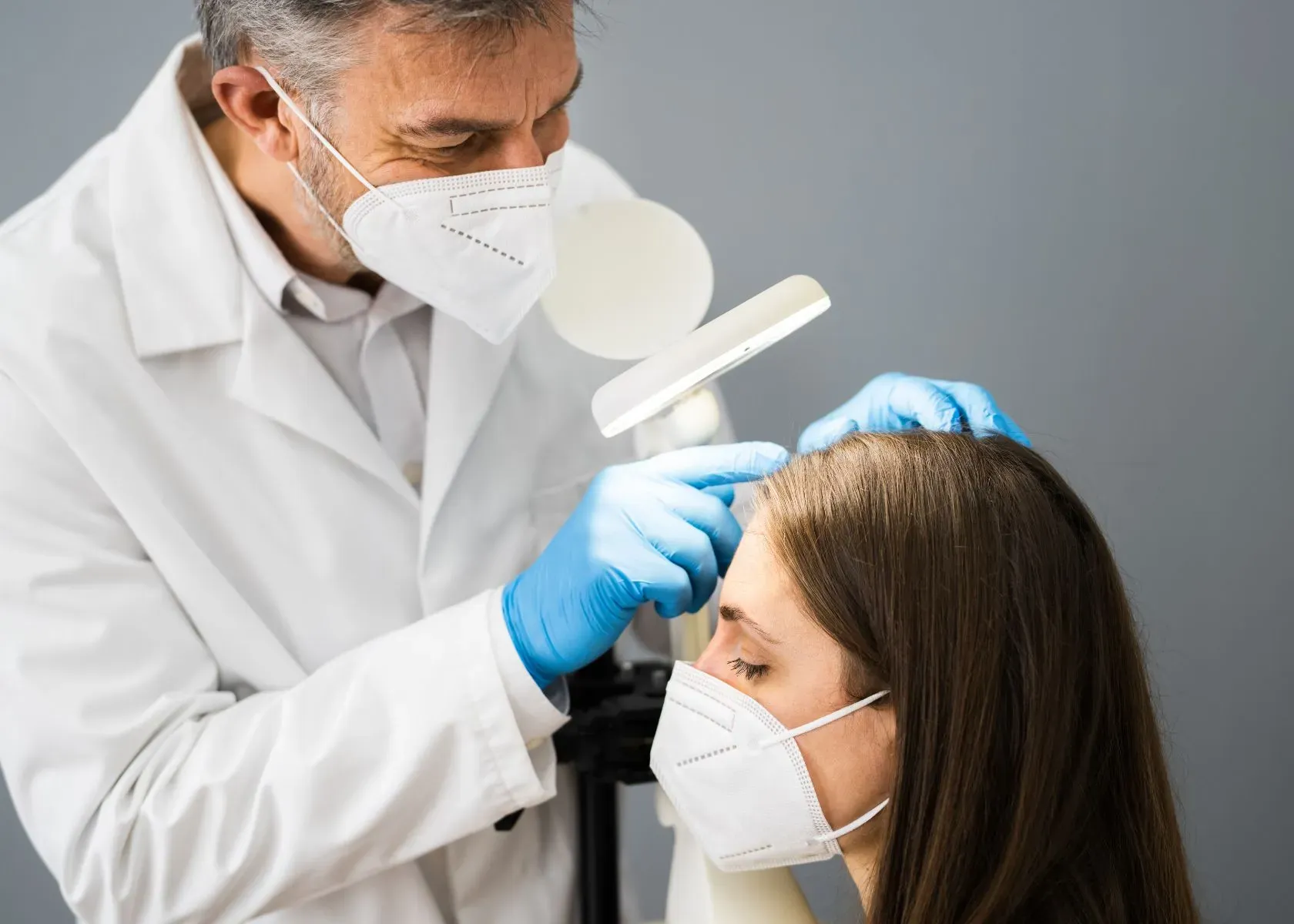Are you fed up with constantly having to dust off those embarrassing white flakes from your shoulders or that relentless itch that just won't quit? You're not the only one. Dandruff has a way of crashing the party and refusing to leave, much like an unwelcome houseguest.
And trust me – it's a common issue, with research indicating that about half of all adults find themselves dealing with dandruff at some point. Plus, try not to use a normal shampoo because anti-dandruff shampoos work effectively on hair follicles.
But here's the good news: I've navigated through this snowy nuisance myself and discovered several effective tactics along the way. We’ll navigate these flaky waters together as we delve into how harnessing an anti-dandruff shampoo can be a game-changer in our quest for flake-free hair.
In this article, I'll walk you through everything from picking out the perfect product to fine-tuning your shampoo routine, so your scalp gets the pampering it deserves. Eager for some dandruff-busting tips? Let’s dive into strategies for how to use anti-dandruff shampoo.
- To effectively use dandruff shampoo, wet your hair thoroughly before applying the shampoo to ensure it lathers and spreads evenly across your scalp.
- Massage the shampoo gently into your scalp and leave it on for the recommended time before rinsing with cold water to seal in moisture and reduce frizz.
- Use dandruff shampoo containing active ingredients such as ketoconazole or selenium sulfide at least three times a week for optimal results in controlling flaking, itching, and irritation.
- Avoid using too much dandruff shampoo, as excessive use can strip your hair of natural oils, leading to dryness; always follow the instructions on the bottle.
How Does Anti Dandruff Shampoo Work?

Dandruff shampoo works by using active ingredients such as zinc pyrithione, selenium sulfide, or ketoconazole to target the fungus and bacteria that can cause dandruff. These ingredients help to reduce inflammation on the scalp and control flaking, itching, and irritation.
By correctly using scalp shampoo, you can effectively manage your dandruff and maintain a healthy scalp.
Active Ingredients that Fight Dandruff
I tackle my flaky scalp head-on with shampoos that pack a punch against dandruff. Key players like ketoconazole and selenium sulfide are my go-to ingredients. They work by reducing fungus and slowing down the growth of skin cells on my scalp, which is often the source of those pesky flakes.
These medicated ingredients can be powerful allies in keeping the itchiness and flakes at bay.
I make sure to use these shampoos as directed for the best results. Often, I find myself massaging them onto my wet scalp, letting them sit for around five minutes to do their magic before rinsing off thoroughly.
It's not just about clearing away visible flakes; it's also about maintaining overall hair and scalp health by using these targeted treatments regularly in my hair care routine.
Regular use of an anti-dandruff shampoo three times a week has been proven effective for controlling severe dandruff issues, according to clinical studies. Whether I'm dealing with seasonal dryness or ongoing irritation, incorporating these specially formulated shampoos into my hair cleansing process helps me maintain a flake-free look comfortably—and confidently.
How to Correctly Use Dandruff Shampoo?
To ensure the best results, it's important to use dandruff shampoo correctly. Begin by wetting your hair before applying the shampoo, as this helps it adhere to your scalp. Massage the shampoo gently into your scalp and leave it on for the recommended time before rinsing with cold water.
Remember that using too much shampoo can be counterproductive, so follow the instructions on the bottle. Also, avoid using hot water as it can aggravate the scalp. When dealing with persistent or severe dandruff, consider seeking medical treatment for any underlying conditions.
Using dandruff shampoo effectively involves following specific guidelines. For moderate to severe dandruff, clinical studies recommend using an anti-dandruff shampoo at least three times a week for effective results.
It's essential to choose a medicated dandruff shampoo containing active ingredients such as ketoconazole, salicylic acid, zinc pyrithione, or selenium, which are effective in controlling dandruff symptoms like itching and dryness while reducing oil and skin cell buildup on your scalp.
Mistakes to Avoid when Using Dandruff Shampoo

Using too much shampoo can strip the scalp of its natural oils and lead to dryness while using hot water can further irritate the scalp. Applying shampoo before wetting your hair can also make it less effective in treating dandruff.
Using Too Much Shampoo
Applying too much dandruff shampoo can strip your hair of its natural oils, leaving it dry and brittle. It's important to use only the recommended amount of shampoo, as excessive use can cause irritation and worsen dandruff symptoms.
Overuse may not provide better results but instead, lead to scalp and hair issues due to harsh ingredients in the shampoo.
Using an excessive amount of dandruff shampoo won't yield faster or more effective results but could result in negative outcomes like scalp irritation or dryness. To avoid overusing dandruff shampoo, always follow the instructions on the bottle, using just enough to cover your scalp and hair.
Using a moderate amount ensures effectiveness without causing harm from overuse.
Using Hot Water
After ensuring that you are not using too much dandruff shampoo, the next crucial step is to pay attention to the temperature of the water. Using hot water can actually worsen dandruff by stripping away natural oils from the scalp and causing dryness.
It's important to use lukewarm or cool water when wetting your hair and rinsing off the shampoo. This helps maintain moisture in your scalp and prevents further irritation.
Using hot water when washing your hair with dandruff shampoo can lead to increased oil production, essentially counteracting the effects of the treatment. Opting for cooler temperatures will help soothe an itchy scalp, reduce inflammation, and provide a more effective overall treatment for dandruff.
Applying Shampoo Before Wetting Hair
Before wetting my hair, I usually apply the dandruff shampoo directly to my dry scalp. This allows the active ingredients in the shampoo to start working on breaking down oils and flakes before rinsing.
Once thoroughly massaged into my scalp, I then proceed to wet my hair and lather the shampoo, ensuring it covers all areas. This method has proven effective for me in tackling stubborn dandruff.
When applying shampoo before wetting your hair, you allow the product to better adhere to your scalp instead of being diluted by water too quickly. It's important not only to cover all affected areas but also to let it sit for a few minutes, as recommended on the label, for maximum effectiveness against dandruff.
Proper Technique for Using Dandruff Shampoo

Wet your hair thoroughly before applying the dandruff shampoo, then massage it into your scalp and leave it on for the recommended time before rinsing with cold water. Here are the 4 key steps for applying anti-dandruff shampoo:
Step 1: Wetting Hair Before Applying Shampoo
To ensure the dandruff shampoo effectively reaches my scalp and hair, I always wet my hair thoroughly before applying it. This simple step helps the shampoo to lather and spread evenly across the scalp, allowing the active ingredients to work their magic.
By moistening my hair first, I make sure that the dandruff shampoo can target all areas of my scalp, providing maximum benefit for tackling dandruff and maintaining a healthy scalp.
Ensuring that your hair is fully saturated before applying the dandruff shampoo is essential in allowing it to properly cleanse and treat your scalp.
Step 2: Massaging Shampoo Into Scalp
After wetting the hair and applying dandruff shampoo, it's crucial to massage the product into the scalp thoroughly. Gently massaging the shampoo into the scalp helps to exfoliate dead skin cells and improve blood circulation, which can aid in reducing dandruff.
It also ensures that the active ingredients in the shampoo penetrate deeply for maximum effectiveness.
The massaging motion should be gentle but firm, using circular motions with your fingertips. Pay special attention to areas where dandruff is most prevalent, such as behind the ears and along the hairline.
Step 3: Leaving Shampoo on For the Recommended Time
After massaging the dandruff shampoo into your scalp, it's crucial to leave it on for the recommended time. This step allows the active ingredients in the shampoo to work effectively against dandruff and its symptoms.
Medicated shampoos may require leaving them on for a few minutes to allow the active ingredients like ketoconazole or selenium to penetrate your scalp and target the root causes of dandruff.
Giving the shampoo ample time helps ensure that it can thoroughly cleanse your scalp and provide relief from itching and flaking.
Leaving anti-dandruff shampoo on for the specified duration, typically 2-3 minutes, is essential for optimal results. During this time, it's best not to disturb or rinse off the shampoo before completing the recommended duration, as this might reduce its efficacy.
Step 4: Using Cold Water to Rinse
After leaving the dandruff shampoo on for the recommended time, it's essential to rinse with cold water. Cold water helps to close the hair cuticle and reduce frizz while sealing in moisture.
This can also help prevent scalp irritation and itching by soothing the skin. Additionally, rinsing with cold water can contribute to a healthier scalp by promoting blood circulation, which aids in maintaining a balanced and nourished scalp environment.
Using cold water also has the added benefit of making your hair appear shinier and smoother as it closes the hair shaft, preventing dirt from accumulating and causing flakes. Furthermore, using cold water after applying dandruff shampoo assists in preserving any active ingredients present in the product, ensuring maximum efficacy for combating dandruff concerns.
Lifestyle and Home Remedies for Dandruff

Regular brushing and scalp massage can help reduce dandruff by promoting blood circulation and removing flakes from the scalp. Additionally, using natural remedies like tea tree oil can provide relief from itching and flaking caused by dandruff.
Avoiding triggers such as stress, cold weather, and certain hair products can also help prevent the worsening of dandruff symptoms.
Regular Brushing and Scalp Massage
Brushing your hair regularly helps to distribute natural oils and exfoliate dead skin cells, which can help reduce dandruff. When brushing, use a clean brush with soft bristles and gently work from the scalp down to the ends of your hair.
Massaging your scalp also stimulates blood flow and can help loosen flakes for easier removal. Additionally, massaging in a nourishing oil or using a special scalp massage tool can further promote healthy circulation and aid in reducing dandruff symptoms.
Using these techniques consistently alongside other dandruff treatments like medicated shampoos can lead to improved scalp health over time. It's important to incorporate regular brushing and scalp massage as part of your overall care routine for managing dandruff effectively.
Using Natural Remedies Like Tea Tree Oil
Before considering medication, some people turn to natural remedies like tea tree oil to combat dandruff. Tea tree oil has anti-fungal properties that may help reduce the symptoms of dandruff.
When using this essential oil as a remedy for dandruff, it's important to dilute it with a carrier oil such as coconut or olive oil before applying it to the scalp. You can also find shampoos and conditioners containing tea tree oil, which could be an easier way to incorporate this natural remedy into your hair care routine.
Tea tree oil is known for its antibacterial and anti-inflammatory properties, making it a popular choice among those seeking more holistic approaches to scalp issues.
While there is no conclusive evidence that tea tree oil completely eradicates dandruff, many individuals have found relief from itchiness and flakiness after regular use. Moreover, you can also try aloe vera, coal tar, pyrithione zinc, or any other active ingredient to make your hair healthy.
Avoiding Triggers that Can Worsen Dandruff
When it comes to managing dandruff, avoiding certain triggers is essential. Factors such as stress, cold and dry weather, using harsh hair products, or excessive washing can worsen dandruff.
It's important to maintain a healthy scalp by managing these triggers effectively. By minimizing exposure to these aggravating factors, you can help keep dandruff under control and promote a healthier scalp environment. Moreover, don't keep your hair wet all the time.
Additionally, keeping a balanced diet and maintaining good overall health can also play a role in preventing the worsening of dandruff symptoms. Ensuring proper nutrition contributes to not only overall well-being but also supports the health of your scalp.
When to See a Doctor for Severe Dandruff?

If the dandruff is persistent and severe, it's important to seek medical treatment for any underlying conditions that may be causing it.
Persistent and Severe Dandruff
Persistent and severe dandruff can be stubborn to treat with regular over-the-counter shampoos. When dandruff is persistent and severe, it may require a stronger medicated shampoo with specific active ingredients like ketoconazole or selenium sulfide to effectively combat the condition.
These ingredients work by targeting the underlying causes of dandruff, such as yeast overgrowth or inflammation of the scalp.
Seeking medical treatment for persistent and severe dandruff is crucial. Dermatologists can prescribe prescription-strength shampoos or topical treatments that are more potent than over-the-counter options, providing relief for those suffering from severe symptoms.
It's important to consult a doctor when experiencing persistent and severe dandruff as they can also evaluate if an underlying skin condition, such as seborrheic dermatitis, could be causing the issue.
Seeking Medical Treatment for Underlying Conditions
If over-the-counter dandruff shampoos and home remedies fail to address the persistent and severe dandruff, it's advisable to seek medical treatment for underlying conditions. Oftentimes, chronic dandruff could be a symptom of an underlying health issue such as seborrheic dermatitis or psoriasis.
Consulting with a dermatologist can help identify the root cause of your stubborn dandruff and provide targeted treatment options.
Medicated shampoos containing ingredients like ketoconazole or selenium sulfide are often recommended by doctors to treat more severe cases of dandruff. Additionally, prescription-strength steroid creams or antifungal medications may be necessary to tackle underlying scalp conditions that contribute to persistent dandruff.
Seeking professional medical advice is crucial in managing chronic and severe dandruff effectively.
Frequently Asked Questions
After testing several different brands and formulations, I learned a lot about what works best for me personally to keep dandruff at bay.
But it took some trial and error to figure things out. To help others in the same boat, I've put together this list of frequently asked questions about using medicated shampoos to banish dandruff.
How should I apply anti-dandruff shampoo to get the best results?
Start by wetting your hair, then apply the anti-dandruff shampoo directly to your scalp, scrub gently, and let it sit for a few minutes before rinsing thoroughly.
Can anti-dandruff shampoos help with an oily scalp?
Yes! Anti-dandruff shampoos are formulated to target and reduce excess oil on your scalp that can contribute to dandruff.
What techniques should I use when using dandruff shampoo?
For effective use of dandruff shampoo, massage it onto your scalp in circular motions and follow dermatologist-recommended instructions for how long to leave it before rinsing.
Are there specific tips for using dandruff shampoo effectively?
Make sure you're applying the antidandruff product regularly as instructed on the bottle and concentrate on getting it right onto the scalp care area where dandruff tends to form.
Is there a correct method for using dandruff shampoo recommended by experts?
Dermatologists often suggest applying anti-dandruff products consistently every wash day, leaving them in contact with the scalp for several minutes according to proper usage directions found on each product's label.
Conclusion
Mastering the correct method for using dandruff shampoo is key. Following these techniques can lead to significant improvements in scalp health. Are you ready to take action and achieve a flake-free scalp? Explore additional resources for further insight into combating dandruff.
If you have your own technique for using dandruff shampoos, feel free to share it with all of us in the comments below.
References
- Healthline. (n.d.). Pyrithione Zinc: Uses in Skin Care Products, Benefits & Side Effects.
- MedicineNet. (n.d.). Ketoconazole vs. Selenium Sulfide: Side Effects & Uses for Dandruff Shampoo.
Read More Dandruff-Related Topics





